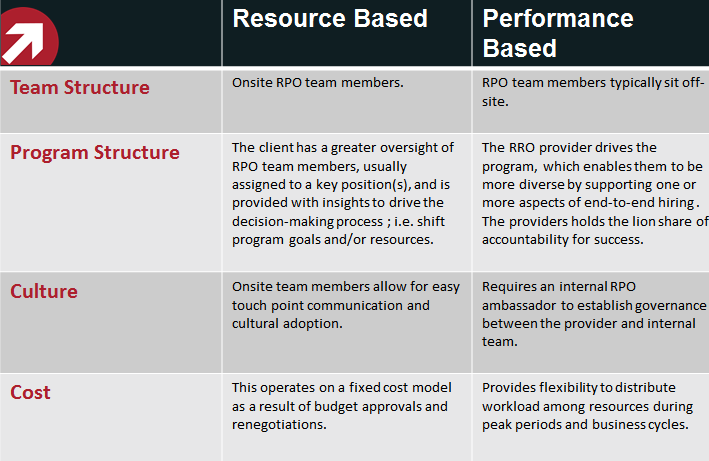 When your talent needs shift, so should your RPO program. But, understanding which Recruitment Process Outsourcing (RPO) model to use, and whether your provider is in tune with hiring volume requires a fundamental understanding of RPO. Learn about the most widely used RPO models, and how you can ensure that your provider is doing its job.
When your talent needs shift, so should your RPO program. But, understanding which Recruitment Process Outsourcing (RPO) model to use, and whether your provider is in tune with hiring volume requires a fundamental understanding of RPO. Learn about the most widely used RPO models, and how you can ensure that your provider is doing its job.
Recruitment Process Outsourcing is typically associated with cost-savings because the RPO provider uses a variety of proven tactics to bring greater efficiencies to the recruiting life cycle. While this is one benefit of engaging in a RPO program, cost-savings isn’t always the top priority for the client, or talent acquisition teams.
Need more information on RPO models and use cases? Download the deck from this RPO webinar.
RPO Pricing Models
In this RPO webinar hosted by Yoh, we discussed two of the most popular RPO pricing models: resource and performance-based RPO.
A resource-based RPO model is structured in that you have a set number of dedicated RPO recruiters. They are likely sitting on-site at your location, and their performance is measured by a pre-determined SLA, or Service Level Agreement. To make any changes to the structure, process, tools or headcount generally requires a formal approval process.
On the contrary, the RPO Performance Based model is designed with customer-centric flexibility at its core. It will be able to meet fluctuations in hiring volumes by scaling its recruitment team up and down as needed. One of the key benefits to this model is that the ownership of responding to fast-changing market and business conditions lies in the hands of the RPO provider; not the client.
 RPO Webinar: Scaling Your Workforce Without Spinning Out of Control
RPO Webinar: Scaling Your Workforce Without Spinning Out of Control
RPO Use Case
During the live webinar, Yoh highlighted an internationally-based RPO client who at the start of its resource-based program, was in the midst of heavy hiring. About a year later, the client experienced a massive drop in hiring volume as a result of a volatile global economy.
Suddenly and without warning, the resource-based approach didn't really make sense. Scalability and flexibility outranked process and consistentcy as hiring volume fluctuated. To determine whether this RPO model was the most cost-effective, Yoh conducted an analysis and determined that by moving to a performance based model, the client would reap a cost-savings of nearly $800,000 (over three years).
Consider that it is a good RPO provider will make time to aggregate and analyze cost models during unique and unforeseeable circumstances. The bottom line is RPO providers have an obligation to their clients to advise them on what’s going to drive their process more efficiently. Being aligned on the strategic goals and knowing how to focus on the outcome is part of what makes one RPO provider stand out from the rest.



